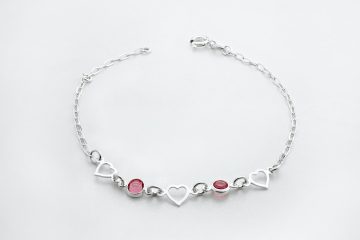If you’re an avid outdoor enthusiast or someone who enjoys crafting, you may have come across paracord bracelets. These versatile accessories not only add a touch of style to your wrist but also serve as a practical tool in emergency situations. Whether you’re planning to make one for yourself or as a gift for a friend, a common question that arises is, “How much paracord do I need for making a bracelet?” In this article, we’ll explore the factors that influence paracord bracelet length and provide you with a comprehensive guide to calculating the perfect length.
Understanding Paracord
Before we dive into the nitty-gritty of paracord bracelet length, let’s first understand what paracord is. Short for “parachute cord,” paracord is a lightweight nylon rope originally used in the suspension lines of parachutes during World War II. Over time, it has gained popularity due to its strength, durability, and versatility. Paracord typically consists of an outer sheath with multiple inner strands, which can be unraveled and used for various purposes.
Factors to Consider
When determining the appropriate length of paracord for your bracelet, several factors come into play. Let’s take a closer look at each of these factors:
1. Wrist Measurement
The most crucial factor in calculating the length of paracord needed for a bracelet is your wrist measurement. By measuring your wrist accurately, you can ensure a comfortable fit that is neither too loose nor too tight. To measure your wrist, use a flexible measuring tape or a piece of string that you can later measure against a ruler. Wrap the measuring tape or string around the circumference of your wrist just above the wrist bone. Make sure it’s snug but not too tight. Note down the measurement in inches or centimeters.
2. Knot Type
The type of knot you plan to use for your bracelet also affects the length of paracord required. Different knots require varying amounts of cord to achieve a particular length. Common knots used in paracord bracelets include the cobra knot, fishtail knot, and square knot. Each knot has its own unique pattern and requires a specific length of paracord.
3. Bracelet Style
The style of bracelet you intend to make plays a significant role in determining the amount of paracord needed. There are various bracelet styles to choose from, such as the standard single-cord bracelet, double-cord bracelet, and wide Solomon bar bracelet. Each style requires a different length of paracord, depending on the complexity and thickness of the design.
4. Additional Embellishments
Consider any additional embellishments or features you plan to incorporate into your bracelet design, such as beads, buckles, or charms. These add-ons require extra space, and you’ll need to account for their size when calculating the paracord length. Remember to measure the length of the embellishments and factor them into your overall calculation.
Now that we’ve discussed the key factors influencing paracord bracelet length, let’s delve into the calculations involved in determining the perfect length.
Calculating the Length
To calculate the ideal length of paracord for your bracelet, follow these steps:
Step 1: Determine the Wrist Size
Using the measurement of your wrist circumference obtained earlier, add a small amount of extra length to ensure a comfortable fit. This additional length will account for the knotting and weaving of the paracord. A common rule of thumb is to add 1 inch (2.54 cm) to your wrist measurement. However, if you prefer a looser or tighter fit, you can adjust the added length accordingly.
Step 2: Account for the Knot Type and Bracelet Style
Consider the knot type and bracelet style you have chosen. Each knot and style requires a specific amount of paracord. Research online resources, tutorials, or books dedicated to paracord crafting to find the recommended lengths for your chosen knot and style. Once you have this information, you can move on to the next step.
Step 3: Calculate the Total Length
Add the additional length from Step 1 to the recommended length for your knot and style obtained in Step 2. This sum will give you the total length of paracord needed for your bracelet. Ensure your measurement is in the same units (inches or centimeters) as the original wrist measurement.
By following these steps and considering the factors mentioned earlier, you can confidently calculate the perfect length of paracord required for your bracelet. Remember, it’s always better to have a slightly longer cord than falling short during the crafting process.
Conclusion
Crafting paracord bracelets is a fun and rewarding activity that allows you to showcase your creativity while also preparing yourself for unexpected situations. By understanding the factors influencing paracord bracelet length and following the steps outlined in this article, you can ensure a comfortable and well-fitting bracelet. So, grab your paracord, measure your wrist, and start creating your very own stylish and functional paracord bracelet today!
FAQs
Q1: Can I use the same length of paracord for all types of knots and bracelet styles?
No, different knots and bracelet styles require varying lengths of paracord. It’s essential to research and find the recommended lengths for your chosen knot and style. By doing so, you can ensure that your bracelet turns out as intended.
Q2: Can I make adjustments to the length of my paracord bracelet after it is complete?
In most cases, it is challenging to adjust the length of a paracord bracelet once it is finished. It’s crucial to calculate the length accurately before you start crafting to avoid any inconvenience later on.
Q3: What should I do if I don’t have a measuring tape to measure my wrist?
If you don’t have a measuring tape, you can use a piece of string or a strip of paper. Wrap it around your wrist, mark the point where it overlaps, and then measure the length against a ruler.
Q4: How do I know if my paracord bracelet is the right size?
A well-fitting paracord bracelet should be snug but not too tight. It should slide easily over your hand and rest comfortably on your wrist. If the bracelet feels too loose or too tight, you may need to adjust the length accordingly.
Q5: Can I repurpose leftover paracord from previous projects for making bracelets?
Absolutely! Repurposing leftover paracord is a great way to reduce waste and create unique bracelets. Just make sure you have enough length to complete the bracelet without falling short. If needed, you can always join multiple cords together using a joining knot.




